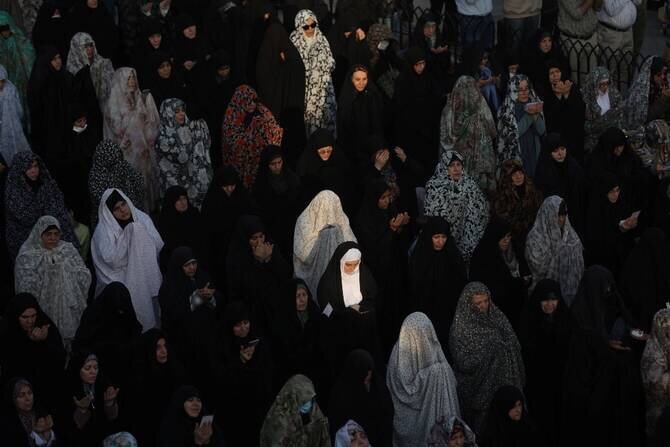
Iran Launches Cloud Seeding Operations Amidst Severe Drought
In a bid to combat the worst drought in decades, Iran initiates cloud seeding to induce rainfall.
TEHRAN: Iranian authorities have initiated cloud seeding operations as the country grapples with its most severe drought in recent history.
According to state media, a cloud seeding flight was conducted for the first time in the Urmia Lake basin during the current water year, which began in September.
Urmia, located in the northwest and once Iran's largest lake, has largely dried out due to prolonged drought and turned into a vast salt bed.
Further operations are planned for the provinces of East and West Azerbaijan.
Cloud seeding involves spraying particles such as silver iodide and salt into clouds from aircraft to stimulate rainfall.
Iran announced last year that it had developed its own cloud seeding technology.
IRNA reported rain in several western regions, including Ilam, Kermanshah, Kurdistan, Lorestan, and West Azerbaijan.
The country's meteorological organization stated that rainfall has dropped by approximately 89% this year compared to the long-term average.
It highlighted that the current autumn is the driest the nation has experienced in 50 years.
State media showcased footage of snowfall on Tochal mountain and ski resort, situated near Tehran in the Alborz range, marking the first such occurrence this year.
Iran, an arid country already grappling with chronic dry spells and heatwaves exacerbated by climate change, has seen the lowest rainfall levels in a century in its capital, Tehran.
Furthermore, half of the provinces have been without rain for months, with water reservoirs reaching record low levels.
Earlier this month, President Masoud Pezeshkian issued a warning that without pre-winter rain, Tehran could face evacuation.
Other Middle Eastern countries, such as the United Arab Emirates, have also employed cloud seeding to induce artificial rainfall.
According to state media, a cloud seeding flight was conducted for the first time in the Urmia Lake basin during the current water year, which began in September.
Urmia, located in the northwest and once Iran's largest lake, has largely dried out due to prolonged drought and turned into a vast salt bed.
Further operations are planned for the provinces of East and West Azerbaijan.
Cloud seeding involves spraying particles such as silver iodide and salt into clouds from aircraft to stimulate rainfall.
Iran announced last year that it had developed its own cloud seeding technology.
IRNA reported rain in several western regions, including Ilam, Kermanshah, Kurdistan, Lorestan, and West Azerbaijan.
The country's meteorological organization stated that rainfall has dropped by approximately 89% this year compared to the long-term average.
It highlighted that the current autumn is the driest the nation has experienced in 50 years.
State media showcased footage of snowfall on Tochal mountain and ski resort, situated near Tehran in the Alborz range, marking the first such occurrence this year.
Iran, an arid country already grappling with chronic dry spells and heatwaves exacerbated by climate change, has seen the lowest rainfall levels in a century in its capital, Tehran.
Furthermore, half of the provinces have been without rain for months, with water reservoirs reaching record low levels.
Earlier this month, President Masoud Pezeshkian issued a warning that without pre-winter rain, Tehran could face evacuation.
Other Middle Eastern countries, such as the United Arab Emirates, have also employed cloud seeding to induce artificial rainfall.











